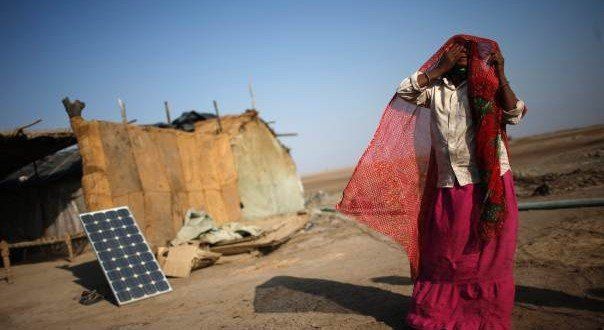
Developed countries have been asked to reveal by the end of March what action they are prepared to take to curb global warming. Their offers – some of which may come later – are expected to focus on cutting greenhouse emissions, and will be part of a new deal to tackle climate change, due to be agreed in Paris in December.
There’s growing speculation over what some of the highest-emitting developing nations are planning to put on the table too.
India is among those that have promised a climate plan, known in the jargon as an “intended nationally determined contribution” – though it isn’t clear when.
There were some hints about what India’s offer might contain when the country’s Minister for Environment, Forests and Climate Change Prakash Javadekar spoke at a conference last month.
“We have already started implementing some of the actions that will form the core of India’s contributions,” Javadekar said.
For example, the government is “optimistic” about achieving a target to install 100 gigawatts (GW) of solar by 2020 and could go further with more finance and technology support, he said.
“The answer for India lies in clean energy. We intend to achieve the (solar energy) target in the next five years. That is our nationally determined contribution.”
But Javadekar stressed there are some issues “that cannot be wished away”, beginning with cost.
“Who will pay the extra cost of solar power, for example? In countries (like India) where indirect taxation is higher, the poor will end up paying more,” he said.
He called for additional contributions to the fledgling U.N. Green Climate Fund, which is intended to help poorer countries cope with climate change impacts and pursue green growth, and has so far received pledges of just over $10 billion.
Technology is another key issue for India, Javadekar argued.
“New technologies can bring down costs. We understand the need to protect intellectual property rights (IPR), so we are telling the industrialised world, pay your own companies for IPR from the Green Climate Fund. We must get technologies free of IPR cost.”
For a country where 300 million people lack access to electricity, cutting emissions from their current levels is not seen as a top priority for India.
“The developing world is now asking the developed world if they will vacate carbon space,” Javadekar said.
Environmental experts are hopeful, however, that the majority of power capacity India adds in the next two decades will use renewable energy rather than coal.
More important for India than reducing its emissions is access to technology and finance, not only for clean energy, but also to help the South Asian nation’s billion-strong population adapt to rising sea levels and weather extremes.
No international intervention
Once India has decided on its national contribution to the U.N. climate agreement, it is likely to resist outside scrutiny, in defiance of European calls for transparency.
“There is no question of an ex-ante review in an independent…and democratic country like India,” Javedekar told the Delhi conference organised by the Council on Energy, Environment and Water (CEEW).
Susheel Kumar, a top official with the environment ministry and a negotiator for India at the U.N. climate talks, said the government was striving for a “comprehensive and transparent” national climate strategy, based on consultation with civil society at home.
“There is no room for international intervention,” he stressed.
Many rich nations have argued that contributions to the new global climate deal should be limited to action to reduce emissions.
Most developing countries, on the other hand, have been pressing for the inclusion of adaptation to climate change impacts, finance and technology transfer. Kumar said India’s contribution would contain all four elements.
Other think tanks have also urged India to consider its efforts to boost nuclear energy production as part of its national offer.
Arunabha Ghosh, chief executive officer of CEEW, said the commitments present “an important opportunity for India to showcase its climate leadership through the communication of its past, present and future ambitions”.
“Highly vulnerable countries like India need to press major emitters to increase their mitigation targets, and increase ambition to reduce the vulnerability of their own populations,” said Sudatta Ray of CEEW.
India’s climate offer is not expected to be finalised for several months yet, but some say the government will need to raise its game to ensure credibility among the international community.
This article is published in collaboration with Thomson Reuters Foundation. Publication does not imply endorsement of views by the World Economic Forum.
To keep up with the Agenda subscribe to our weekly newsletter.
Author: Avik Roy is a New Delhi-based freelance contributor for the Thomson Reuters Foundation.



